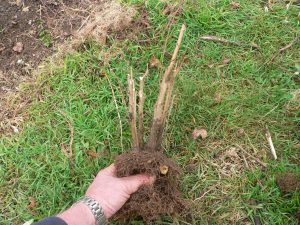Here’s one way of starting a good lateral root system. It works particularly well with trident maples but I have also used it on Japanese maples successfully and it should work well with any species that layers easily.
I tried it once with 5 Japanese Black pines. Only 2 of them survived so I have not used it again with pines but maybe it could be modified to work better.
Start with a piece of sheet metal. I’ve tried stainless steel which is very hard to drill holes in. Now I’m using aluminium sheet – easy to cut and easy to drill but also strong and durable. I’ve used these same pieces over and over for more than 10 years now. As you can see from the pics mine have been cut from old roadsigns I got from the scrap metal yard.
Cut pieces around 7-10cm square. Circles would be even better but are harder to cut.
Drill holes in each piece. Size of the holes is not critical but they do need to be big enough to thread your starter plants through. Holes in my sheets are 6mm diameter.
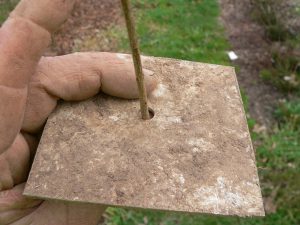 Thread a seedling through the hole. This is obviously far easier in winter when the seedling is dormant.
Thread a seedling through the hole. This is obviously far easier in winter when the seedling is dormant.
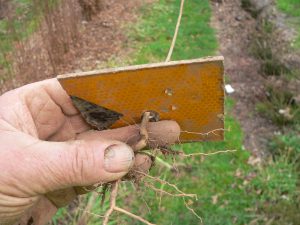 Plant your tree with its new metal collar just under the surface. As the trunk thickens the metal will constrict the flow of nutrients causing new roots to form just above the plate. These new roots will be forced to grow horizontally over the metal plate until they reach the edges giving a horizontal root system.
Plant your tree with its new metal collar just under the surface. As the trunk thickens the metal will constrict the flow of nutrients causing new roots to form just above the plate. These new roots will be forced to grow horizontally over the metal plate until they reach the edges giving a horizontal root system.
Don’t bury your plate too deep. Tridents have a very strong tendency to put out new roots right at the surface and if you give them the opportunity you will end up with more roots above your new nebari. Those higher roots can quickly produce inverse taper and ruin your good work.
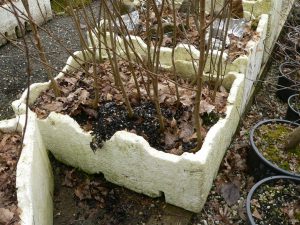 I usually keep my new threaded seedlings in pots in the nursery for the first summer. There is a critical period, usually in mid summer, when the trunk is constricted so water flow is reduced but the new roots are still growing out across the plate and do not have access to deeper, damp soil. At this stage your plant needs to have regular water to keep the surface soil moist where those new roots are developing. The trident maples shown here after just 1 year in a poly box in the nursery and have more than doubled in thickness. Roots should be growing out across the plates that each one is threaded through.
I usually keep my new threaded seedlings in pots in the nursery for the first summer. There is a critical period, usually in mid summer, when the trunk is constricted so water flow is reduced but the new roots are still growing out across the plate and do not have access to deeper, damp soil. At this stage your plant needs to have regular water to keep the surface soil moist where those new roots are developing. The trident maples shown here after just 1 year in a poly box in the nursery and have more than doubled in thickness. Roots should be growing out across the plates that each one is threaded through.
The following winter the plants should be bare rooted to check on progress and adjust as required. At this stage I prune all new lateral roots back to the edge of the plate to force them to further ramify. If you have a few stronger roots cut those even shorter to encourage the weaker ones. I also prune the trunks short at this time. Pruning results in several new leaders which gives the best chances for developing good taper and changes of direction in your developing trunk.
At this stage I usually plant the starters into the ground grow beds where they will grow faster for another year but if you don’t have access to ground growing area use a large pot. Again, be careful not to plant too deep. Roots should be around 1 cm below the surface for best results.
These trees have been in the grow beds for one year.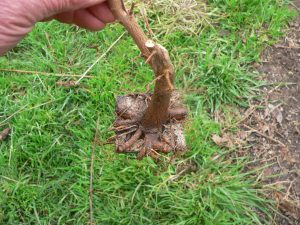
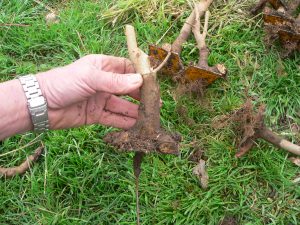
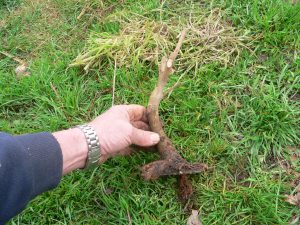
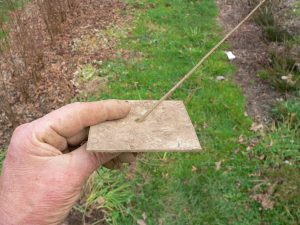 You may have noted that I try to plant the seedlings through the plates at an angle. Unless you are aiming for a formal upright or broom style bonsai, vertical trunks are not very interesting so try to give your starters a bit of trunk movement right from the roots.
You may have noted that I try to plant the seedlings through the plates at an angle. Unless you are aiming for a formal upright or broom style bonsai, vertical trunks are not very interesting so try to give your starters a bit of trunk movement right from the roots.
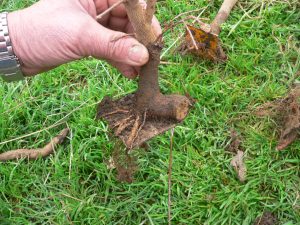
No method is 100% successful. Occasionally one or 2 roots grow very strong and suppress the others. Good pruning at year 1 can minimise this.
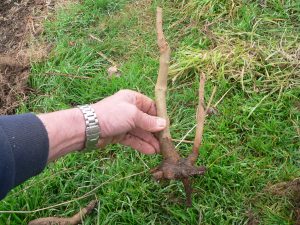
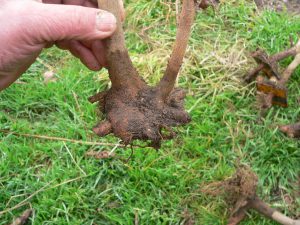
This technique can also be used to develop multi trunk style bonsai. Just drill any number of holes in your metal sheet and thread a seedling through each hole. Not only will roots grow as the seedlings thicken but they will also fuse together into a single multi trunked tree.
Twin trunks.
or many trunks.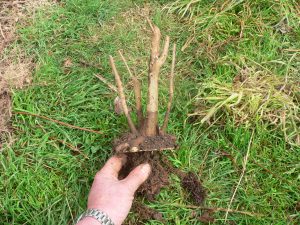
As the trees develop you may need to wire some of the trunks to get a unified arrangement or even remove some completely to leave a better shaped tree.
